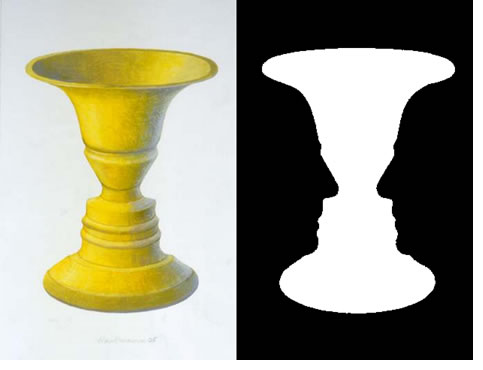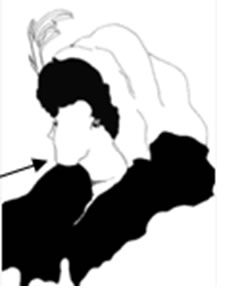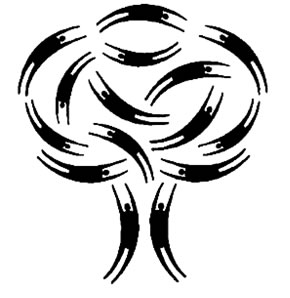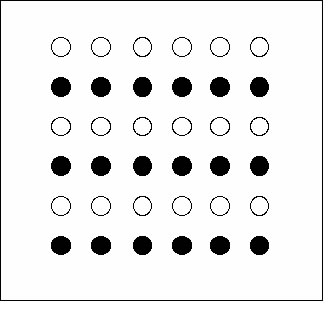Gestalt Principles of Perceptual Organization
The first psychologists that studied how we organize and perceive our world were from Germany and their approach was called Gestalt psychology.
Their work was done in the 1920's and 30's and their belief was that "the whole is greater than the sum of the parts."
This idea was that there was more to perception than just putting pieces of neural information together. They developed a group of principles or laws that explain how we perceive our world.
How Sensation and Perception work Together:
Sensation occurs: Sensory organs absorb energy from a physical stimulus in the environment and sensory receptors convert this energy into neural impulses and send them to the brain.
Perception follows: The brain organizes the information and translates it into something meaningful.
Much of our understanding of how and why we perceive things comes from Gestalt psychology.
The figure-ground relationship is the principle by which we organize the perceptual field into stimuli that stand out (figure) and those that are left over (background, or ground).
Probably the best known example of figure/ground is the vase/faces. It is the Rubin vase illusion.
Focus on the vase and the faces become the background.
Now, focus on the faces and the vase becomes the background.

The image reflects two pictures: one is a yellow figure of a vase, the other shows the same image completely white with a black background, which focuses the image on two profiles rather than the vase.
In this picture most perceptions start at the arrow and if you decided it was a chin, you will see the young lady (a majority of young people perceive it this way).
If you decided it was a nose, you will see an old lady.

The image is a black and white drawing. One may see an image of a young lady at first glance while others may see an image of an old lady.
Proximity
Objects that are placed close together tend to be grouped together.
These fifteen figures form a unified whole (the shape of a tree) because of their proximity.
 Photo Citation: Spokane Fall Community College. (n.d.). The gestalt principles: Proximity. [Image]. Available from: http://graphicdesign.spokanefalls.edu/tutorials/process/gestaltprinciples/gestaltprinc.htm
Photo Citation: Spokane Fall Community College. (n.d.). The gestalt principles: Proximity. [Image]. Available from: http://graphicdesign.spokanefalls.edu/tutorials/process/gestaltprinciples/gestaltprinc.htm
Similarity
Items that are similar tend to be grouped together:
When we see a number of similar objects, we tend to perceive them as groups or sets.
In this image, most people see horizontal
rows of white and black circles.

Closure
When we see incomplete figures, we fill in the spaces and see them as complete figures.
Another thing that affects sensation and perception is attention.
As you are reading this, there are numerous sights, sounds and sensations going on around you - the pressure of your feet against the floor, the sight of the tree blowing out a nearby window, the memory of a conversation you had earlier with a friend.
How do we manage to experience all of these sensations and still focus on just one element of our environment?
Think of attention as a highlighter.
As you read through a section of text in a book, the highlighted section stands out, causing you to focus your interest on that area.
Attention allows you to "tune out" information, sensations and perceptions that are not relevant at the moment and instead focus your energy on the information that is important.
As you have learned in this lesson, sensation and perception are an integral part of our experience with the world around us.
One question to ponder: does perception occur when we are not paying attention?
Most people answer with a quick yes, but recent studies in cognitive psychology suggest that we must be paying attention in order to perceive sensory stimuli.